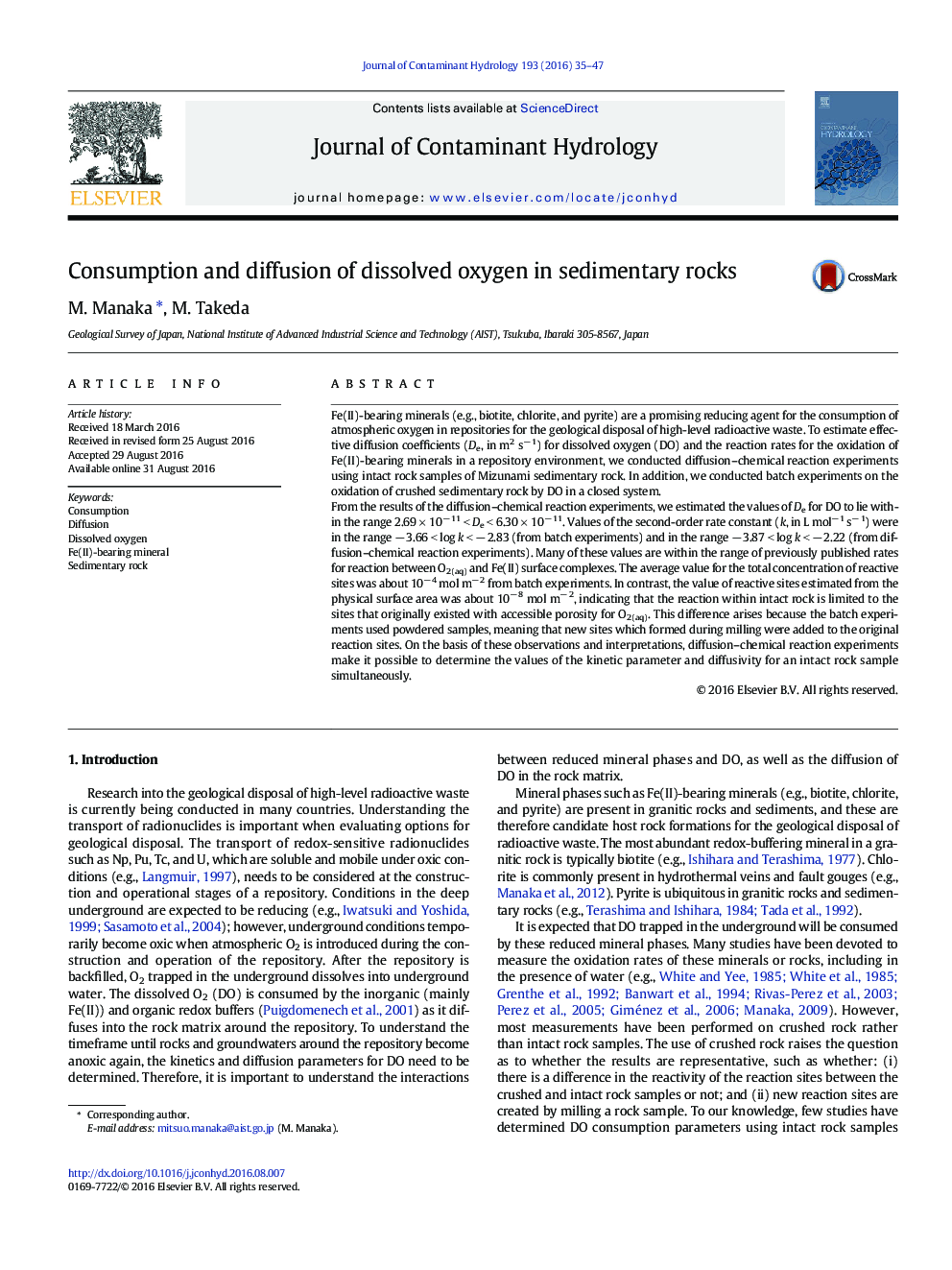| کد مقاله | کد نشریه | سال انتشار | مقاله انگلیسی | نسخه تمام متن |
|---|---|---|---|---|
| 4546330 | 1627018 | 2016 | 13 صفحه PDF | دانلود رایگان |
• Diffusion–chemical reaction experiments using intact rock samples were conducted.
• The experiments can determine their kinetic parameter and diffusivity simultaneously.
• The reaction rates are compared with previously published rates (batch experiments).
• Effective diffusion coefficients (De) for dissolved O2 are compared with De of HTO.
Fe(II)-bearing minerals (e.g., biotite, chlorite, and pyrite) are a promising reducing agent for the consumption of atmospheric oxygen in repositories for the geological disposal of high-level radioactive waste. To estimate effective diffusion coefficients (De, in m2 s− 1) for dissolved oxygen (DO) and the reaction rates for the oxidation of Fe(II)-bearing minerals in a repository environment, we conducted diffusion–chemical reaction experiments using intact rock samples of Mizunami sedimentary rock. In addition, we conducted batch experiments on the oxidation of crushed sedimentary rock by DO in a closed system.From the results of the diffusion–chemical reaction experiments, we estimated the values of De for DO to lie within the range 2.69 × 10− 11 < De < 6.30 × 10− 11. Values of the second-order rate constant (k, in L mol−1 s− 1) were in the range − 3.66 < log k < − 2.83 (from batch experiments) and in the range − 3.87 < log k < − 2.22 (from diffusion–chemical reaction experiments). Many of these values are within the range of previously published rates for reaction between O2(aq) and Fe(II) surface complexes. The average value for the total concentration of reactive sites was about 10− 4 mol m− 2 from batch experiments. In contrast, the value of reactive sites estimated from the physical surface area was about 10− 8 mol m− 2, indicating that the reaction within intact rock is limited to the sites that originally existed with accessible porosity for O2(aq). This difference arises because the batch experiments used powdered samples, meaning that new sites which formed during milling were added to the original reaction sites. On the basis of these observations and interpretations, diffusion–chemical reaction experiments make it possible to determine the values of the kinetic parameter and diffusivity for an intact rock sample simultaneously.
Journal: Journal of Contaminant Hydrology - Volume 193, October 2016, Pages 35–47
